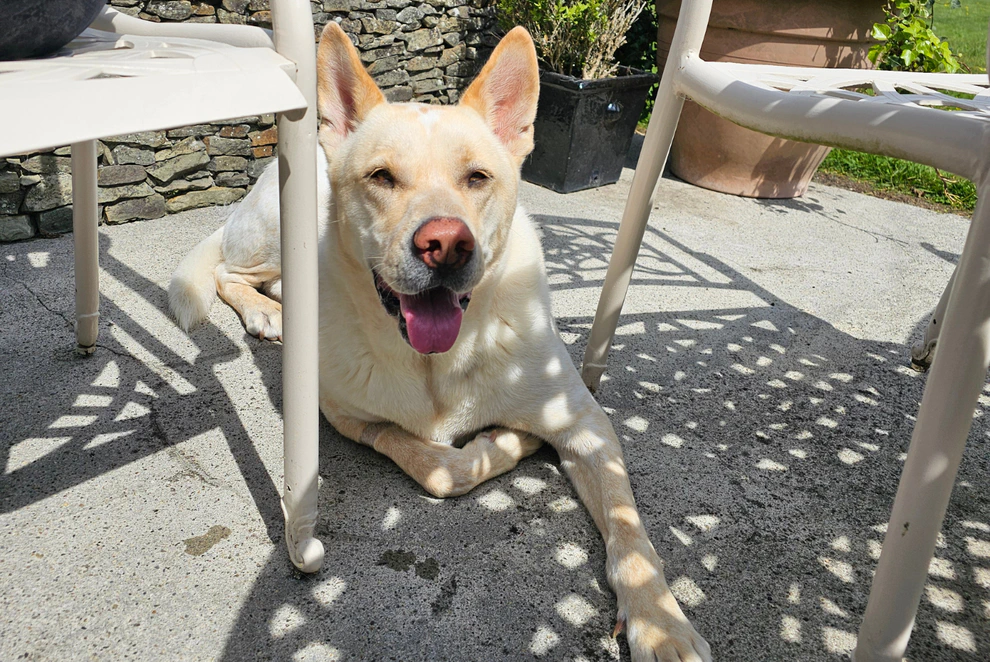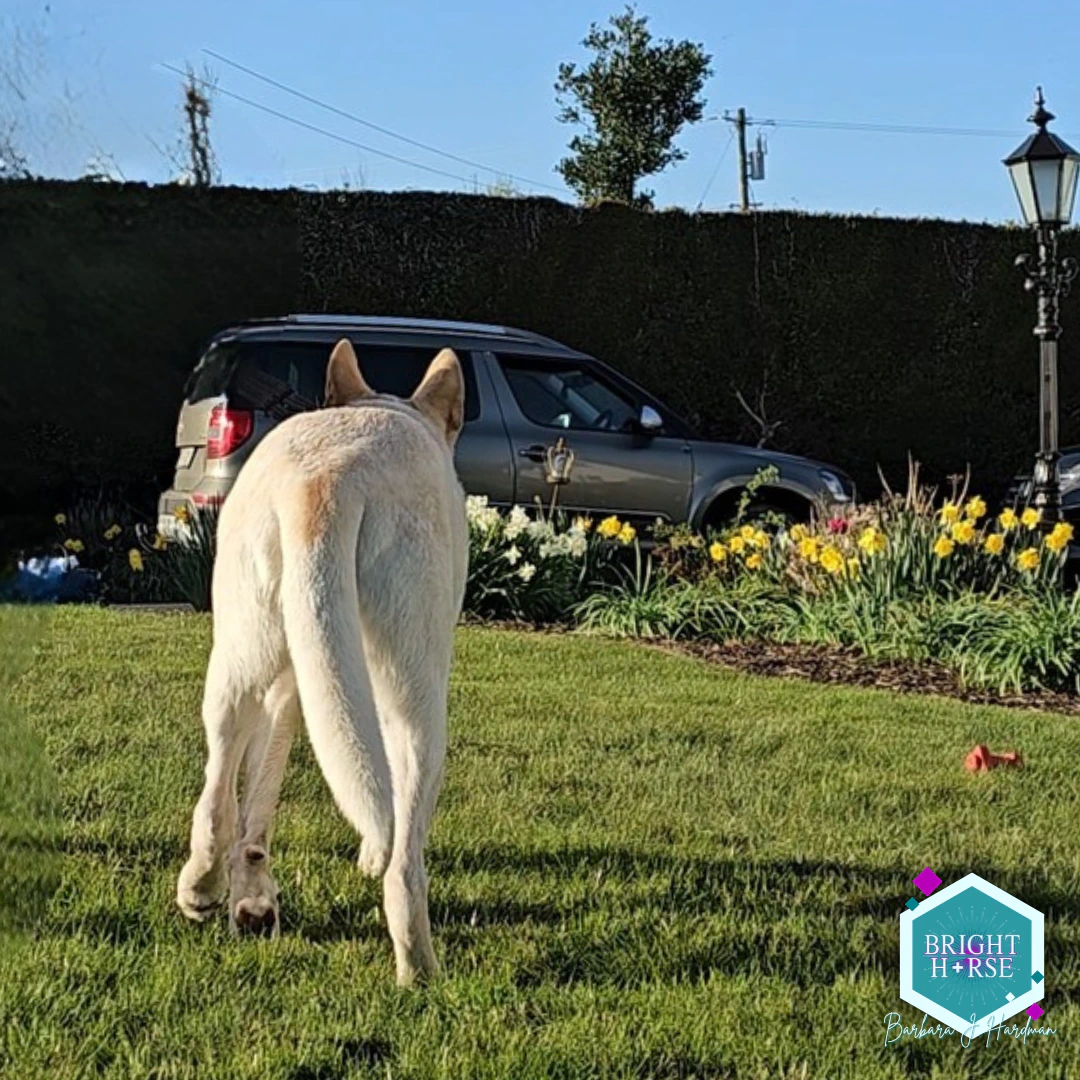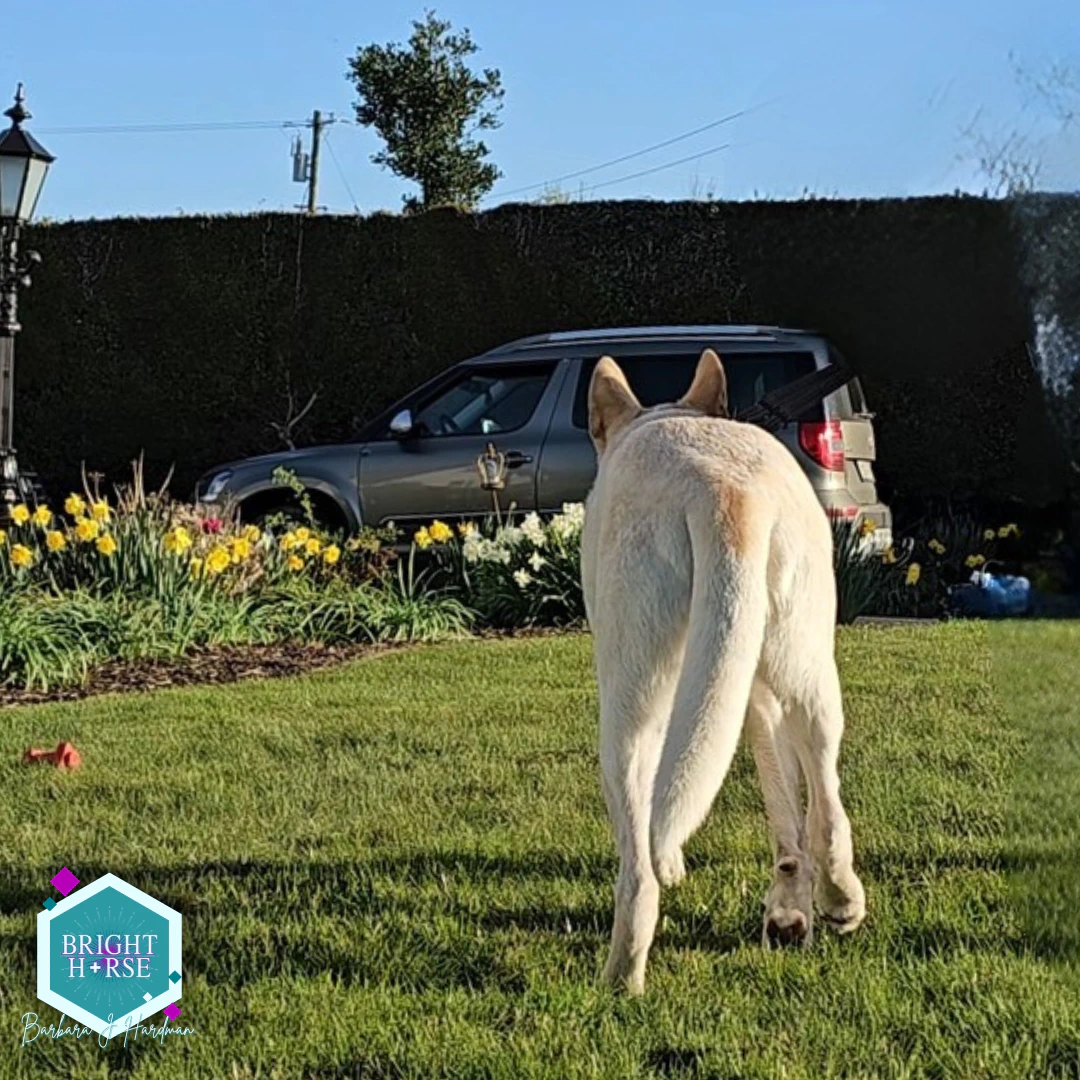Why Behaviour Is Medicine And Why Vets and Behaviourists Must Work Together
There’s a reason behind every behavioural case. Behaviour is never “just” behaviour. It happens in the brain, and the brain is biology. Behaviour is a function or expression of that biology. And sometimes, it’s the result of something happening elsewhere in the body, because the body and brain are deeply, inseparably connected.
In this blog, I want to spotlight Charlie (with the kind consent of his owner to share his story, in the hope that it might help you and your dog). Charlie is a sweet-natured rescue dog, all the way from Hong Kong, whose journey beautifully illustrates the value of listening, observing, and working as a team.
When behaviourists, vets, and owners work together, not only do we get better outcomes, we get them faster and with far less stress on the dog and their people.
Charlie’s story is one of communication. Not just through the behaviours he showed us, but through the collaborative communication of a multidisciplinary team working in his best interest.
Background and Presenting Concerns
Charlie is a ‘Tong Gau’ or Chinese Village Dog who travelled all the way from Hong Kong to Ireland with his lovely owner. A rescue dog, Charlie had already been through several major life changes (which we all go through), including international relocation and, more recently, a move into a new home shared with extended family and other dogs. Life and change happens, but when it follows behavioural issues, this can add to stress.
It was around this time that his behaviour started to shift. His owner began to notice that he was growling more frequently, especially at night when someone entered the bedroom. He was uncomfortable around other dogs, particularly around food and resting spaces. He avoided physical contact, even with people he knew. And his recall had started to deteriorate, especially after exercise.
Charlie had also lived with long-term gastrointestinal issues that never seemed to fully resolve. His appetite fluctuated. He was known to lick his paws excessively. Sometimes his skin was red and irritated. While none of these issues appeared extreme in isolation, together they painted a picture of a dog who was having a hard time.
His owner, concerned and committed, reached out for support. She knew something wasn’t right. And she was right.
The Initial Behavioural Assessment
When I arrived for our first consultation, I asked Charlie’s owner how he usually behaved around visitors. She said he could be very anxious and tended to bark. So we made a plan to meet outside, with Charlie on his lead and harness, so I could observe him in a lower-pressure setting. My goal is never to add undue stress for a dog, if they are scared of strangers then I want to reduce that stress/anxiety.
Charlie was frightened (I do look funny to be fair!). He didn’t bark. He didn’t lunge. He didn’t need to, I could see it.
But his body said everything. His tail was tucked so tightly underneath him it nearly disappeared. His back end was drawn in, his body tense, and his eyes were wide with uncertainty. He was clearly trying to make himself as small as possible. He didn’t take food from me, though he cautiously accepted some from his owner.
We took our time. I used scatter feeding and gave Charlie space to decompress. When it felt safe and appropriate, I asked the owner to unclip his lead so he could move more freely and show me how he carried himself without restriction. This is called ‘freework’ and helps me to assess the dogs movement in a natural way.
That’s when I noticed it. His gait was off. His posture didn’t look quite right. The way he moved suggested discomfort, or at the very least, compensation.
I recorded several videos of Charlie moving through free work activities and captured still images that I could include in my veterinary referral. His avoidance of touch, his reluctance to engage in physical proximity, and the stiffness of his movement weren’t just “behavioural.” They were clues.
We also observed him during a short walk, and the same signs were there. As the pace increased, his arousal rose and his recall deteriorated, something the owner had already noted. These patterns weren’t just about ‘distraction or disobedience’. They were consistent with dogs who are dealing with chronic discomfort. It takes energy to mask pain. When that energy runs out, so does their ability to regulate.
Building the Veterinary Referral and Advocating for Charlie
At this point, it was clear to me that Charlie didn’t just need behavioural support he needed a veterinary investigation. And I could help point the team in the right direction. His behaviours, while often labelled as anxiety or reactivity, were likely being maintained or exacerbated by pain. More specifically, chronic pain.
Chronic pain isn’t the same as “pain pain.” Let me explain.
Chronic pain is ongoing pain that lasts beyond the normal healing time after an injury or illness. Unlike acute pain, which is short-lived and protective, chronic pain can persist for weeks, months, or even years. It doesn’t always have a clear or current cause, and in many cases, it continues long after the original issue has healed.
The problem with chronic pain especially in dogs like Charlie is that they are compliant. He had his “sad face.” He didn’t escalate. He didn’t bite. He simply endured.
It’s what we often describe as being a “good boy” or a “brave boy.” But here’s the thing about bravery: it’s still scary. You can be brave, and it can still hurt. And that makes chronic pain harder to recognise, especially when our dogs can’t tell us what’s wrong in words.
Rather than pushing ahead with a behaviour modification plan, I paused.
I pulled together everything I had observed: his movement, his reluctance to be touched, his gastrointestinal history, and the behavioural signals he had shown. I compiled a detailed veterinary referral report and just to be clear, this is part of my job. I’m here to be your advocate.
The report included:
Still images from gait analysis
Notes on behavioural patterns linked to physical activity
A summary of his emotional presentation
Differential diagnoses to help inform clinical investigation
I sent it directly to the referring vet. Not only to share what I’d seen, but to take the pressure off the owner. Because in a proper referral process, we professionals talk. The vet calls me. We handle the heavy lifting together.
It’s a lot to try to explain this kind of complexity in a ten-minute consult. It’s not the owner’s job to piece it together. It’s mine and it’s the referring vet’s to do this for you and your dog.
This is why multidisciplinary collaboration matters. When behaviourists, vets, and owners work together, the dog benefits. It creates continuity. It creates clarity. And it ensures both emotional and physical needs are recognised and met.
To their credit, and as I’ve come to expect, Charlie’s vet team responded brilliantly. (Shout out to the amazing team at Vetcare Portlaoise .)
The Diagnosis and Next Steps
Charlie’s vet team acted quickly, reviewing my report and conducting further investigation, including imaging. And just like that, the pieces of the puzzle started falling into place.
Charlie was diagnosed with:
Spondylosis of the spine
Hip dysplasia
Early-stage osteoarthritis (OA)
This confirmed what his behaviour had already been trying to tell us. Chronic pain had been quietly shaping his world influencing how he moved, how he reacted to touch, and how much social and environmental pressure he could tolerate. With the right medication and support in place, the transformation was almost immediate.
When I saw Charlie again for his follow-up session, I was met with a different dog. A dog who greeted me at the door with an actual bark, soft body, gentle curiosity, and even a little tail wag. He licked my hand at one point (where I will be honest, I died a little… 😭), we played a chasing game, and he moved with a freedom and enjoyment I hadn’t seen before.
He was comfortable and because he was more comfortable, he was more resilient. His thresholds were higher and his world didn’t feel quite so hard anymore. Even his gastrointestinal issues had started to settle a reminder that the gut and the nervous system are deeply connected. When we reduce stress and pain, the whole system benefits. Often, the “unrelated” problems start to ease too.
This is what happens when we treat the whole dog. When we don’t just ask “how do we stop the behaviour,” but instead ask, “why is the behaviour happening?”
Which all means… now we can achive ethical training!
Behavioural Support Moving Forward & Why This Case Matters
With Charlie now more comfortable, we can finally begin meaningful behavioural work. Not just the surface-level stuff, but work that actually sticks because his body and brain are in a place where learning can happen.
We’ve started:
Separation training to help Charlie build independence
Loose-lead walking so walks are more comfortable and calm
Recall games to rebuild focus and engagement especially important ahead of his big international move back to Hong Kong
Because we treated the pain first, this training is no longer about managing reactions. It’s about teaching skills. It’s ethical, fair, and kind. His owner is so proud of him. And rightly so. She trusted her instincts, reached out for help, and followed through. At our last session, she told me, “I’m just so glad I saw your poster and reached out. You spotted what others missed.” That meant everything. 😭 #ImNotCrying
This is what happens when we stop asking “how do we stop this behaviour?” and start asking “why is it happening?”
This is why multidisciplinary care matters. It’s not just about the dog it’s about lifting the emotional load from the owner too. With everyone working together, things move faster, more gently, and with far less stress for everyone involved.
Charlie’s story is a reminder that behaviour is medicine. Behaviour is the brain, so is the body. Behaviour is communication, so are medical issues. Behaviour is a diagnosis. If it wasn’t then why would training be a treatment?
When we take the time to listen, investigate and when vets, behaviourists, and owners work together the outcome is always better.
And dogs like Charlie get the comfort, clarity, and care they deserve.








